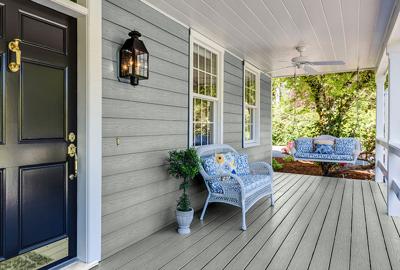
In our quest for sustainable living, we constantly seek innovative solutions that balance aesthetics, functionality, and eco-friendliness. Enter composite cladding, a rising star in the green building scene. This lightweight, durable material is shaking up the construction industry, offering a fresh take on exterior design while keeping sustainability at its core.
But what makes composite cladding such a game-changer? How does it contribute to a greener planet? I'm excited to delve into these questions and more, exploring the ins and outs of this remarkable material. So sit back, relax, and embark on this journey to sustainable living together.
Composite Cladding as an Alternative
Recognizing composite cladding as an alternative opens up a wealth of opportunities. I've discovered that this material, often a blend of recycled wood and plastic, presents a game-changer in construction. It's lighter and sturdier compared to traditional materials.
Benefits of Composite Cladding
Composite cladding stands out among other options due to its distinctive qualities and advantages. This segment focuses on the key benefits of using this material.
Durability and Low Maintenance
Composite materials withstand varied weather conditions with significantly less wear and tear. Traditional wooden cladding, for example, requires regular sealing, staining, or painting, whereas composite cladding retains its appearance with minimal maintenance.
Cost-Efficiency
Though composite cladding might have a higher initial price tag, its durability ultimately translates to cost savings. Its lifespan, often exceeding that of traditional materials, eliminates frequent replacement costs.
Environmentally Friendly
Manufacturers often use recycled materials to produce composite cladding, reducing the requirement for virgin resources. Hence, choosing composite cladding reduces waste and promotes a sustainable living approach.
Aesthetic Appeal
Composite cladding offers undeniable aesthetic advantages, sporting various colors, textures, and designs. This versatility helps enhance the architectural style of any building.
Diving into specifics, composite cladding is a credible, Eco-friendly alternative in the construction industry.
Recycled Materials
Composite cladding often comes from recycled materials, contributing to conservation. By repurposing these materials, I cut down on waste. Statistics show that many cladding comprises recycled components, including wood chips, sawdust, and plastic materials. For instance, the popular brand Trex boasts a composite that's around 95% made of recycled materials.
Low Energy Production
The production process of composite cladding requires less energy. Unlike other materials that consume significant amounts of energy during production, composite requires considerably less. According to a study by the University of Michigan (2010), I reduce energy usage in the production of composite cladding by up to 32% compared to other materials.
Environmental Impact
My choice to use composite cladding reflects a commitment to sustainability. It's manufactured from recycled materials, consumes less energy during production, and endures for a long period, thus minimizing waste.
Sustainable Building Practices
Adopting composite cladding aligns with sustainable building practices. I'm promoting a healthier planet by choosing materials that have minimal environmental impact.
Versatility and Aesthetics
There's no denying the aesthetic appeal of composite cladding. Not only does it blend with various architectural styles, but it also offers an array of color options and finishes. It's hard to beat some composites' natural wood grain appearance.
Versatile Design Options
Composite cladding proves versatile with various textures, colors, and design possibilities. This aids me in achieving different visual effects and meeting specific aesthetic demands.
Composite cladding presents an eco-friendly and sustainable option. Its numerous benefits include being made from recycled materials, requiring low energy during production, offering durability and longevity, needing little maintenance, having minimal environmental impact, and providing versatile design options. As an architect and designer, I've found these advantages to make composite cladding a premium choice in residential and commercial architecture. The contribution to overall sustainability, practicality, and visual appeal make composite cladding a material worth considering for anyone in the building industry.
Composite cladding is a versatile and eco-friendly option that offers numerous benefits for sustainable home construction. Made from recycled materials, it requires less energy than traditional materials while boasting impressive durability, longevity, and low maintenance requirements that reduce environmental impact. Beyond its practical advantages, composite cladding's wide array of design options and color choices allows it to seamlessly integrate with various architectural styles, adding aesthetic appeal to residential and commercial projects and contributing to sustainable building practices.




(0) comments
We welcome your comments
Log In
Post a comment as Guest
Keep it Clean. Please avoid obscene, vulgar, lewd, racist or sexually-oriented language.
PLEASE TURN OFF YOUR CAPS LOCK.
Don't Threaten. Threats of harming another person will not be tolerated.
Be Truthful. Don't knowingly lie about anyone or anything.
Be Nice. No racism, sexism or any sort of -ism that is degrading to another person.
Be Proactive. Use the 'Report' link on each comment to let us know of abusive posts.
Share with Us. We'd love to hear eyewitness accounts, the history behind an article.